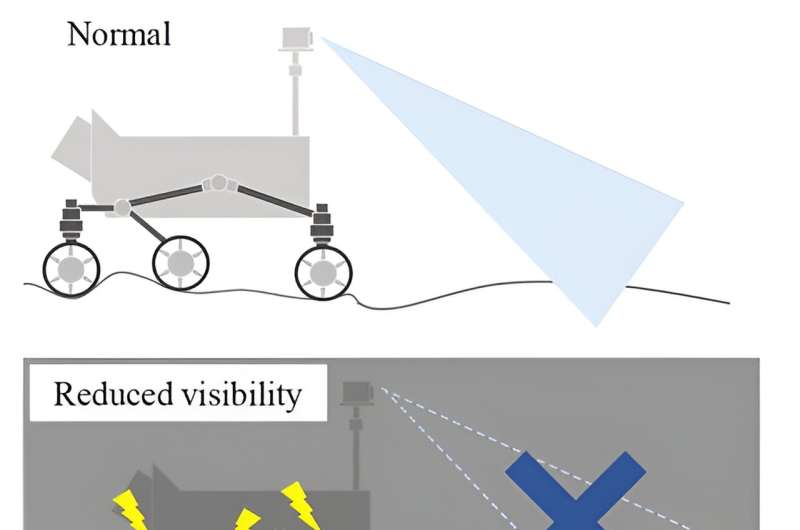This article has been reviewed according to Science X's editorial process and policies. Editors have highlighted the following attributes while ensuring the content's credibility:
fact-checked
proofread
A novel system for slip prevention in unmanned rovers

Given the hostile conditions of extraterrestrial environments, unmanned rovers play a critical role in the exploration of planets and moons. NASA's Mars and lunar exploration rovers have significantly contributed to our understanding of these extraterrestrial bodies. Planetary surfaces often present challenging landscapes with slopes, craters, and dunes.
More importantly, the presence of regolith, fine particles that cover these surfaces, poses a significant challenge for rover mobility. The slipping of rovers on these loose surfaces can hinder their progress and even jeopardize their missions.
Various methods, primarily relying on visual data from cameras, have been explored to detect the traveling state or slip condition of rovers. However, these methods have limitations as they may struggle to differentiate between various terrain features, such as distinguishing rocks from loose sand. A solution to this problem is for the rovers to obtain information about the traction on each wheel. This way, the rover could detect its traveling state faster and correct its posture to avoid slipping.
To realize this, Professor Kojiro Iizuka from the Department of Machinery and Control Systems of the College of Systems Engineering and Science at Shibaura Institute of Technology (SIT), Japan, and Dr. Kohei Inaba, also from SIT, have recently developed a novel system that allows a rover to detect its traveling state by the change in shape of its chassis.
"Our inspiration came from how humans detect their own traveling state based on muscle tension while walking. We aimed to develop a similar system that recognizes the traveling state based on the chassis shape deformation," explains Prof. Iizuka. Their study was published in the journal Remote Sensing.
The muscles in the human body have special muscle fibers called nuclear chain fibers and nuclear bag fibers, which help in detecting the traveling state of the body. The nuclear chain fibers detect the displacement of the tension in the muscles and help in determining the static posture of the body. On the other hand, nuclear bag fibers detect how fast muscle fibers stretch and help in detecting the dynamic state of the body.
Drawing parallels with human muscles, the researchers classified the change in the shape of the chassis of the rover, which manifests as strain, into two categories: displacement of strain and vibrational change in strain. They studied the strain displacement data using nuclear chain fibers analysis and strain velocity as nuclear bag fibers analysis.
The nuclear chain fiber analysis revealed that the forces acting vertically and in the direction of the rover's motion changed with strain. Therefore, monitoring strain changes can enable the detection of force alterations, ultimately indicating the rover's traveling state.
In addition, through nuclear bag analysis, the researchers found that the rate of strain change could effectively gauge the level of slippage and subsequent alterations in the rover's travel state. Using this data, the system can determine the rover's condition in real-time, thus enabling the rover to make essential maneuvers to avert potential slipping incidents.
The study also emphasizes the system's capabilities to detect environmental obstacles, such as rocks and stones, highlighting its potential to enhance the safety and efficiency of rover operations.
Highlighting the importance of this study, Prof. Iizuka remarks, "During rover route planning, the experiences from this study should be considered to ensure that the rovers can travel safely. These findings represent the first step towards incorporating elements of biological functionality in sensing moving objects. We believe that our approach will also be effective for unmanned aerial vehicles and automatic driving in the future."
In conclusion, this innovative study marks a significant step towards improving the safety and effectiveness of rover missions, promising advancements in our exploration of other planets and celestial bodies.
More information: Kojiro Iizuka et al, Slip Estimation Using Variation Data of Strain of the Chassis of Lunar Rovers Traveling on Loose Soil, Remote Sensing (2023). DOI: 10.3390/rs15174270
Provided by Shibaura Institute of Technology
















